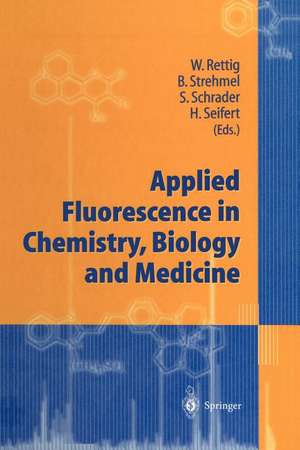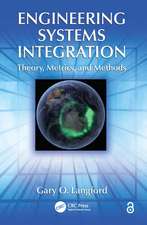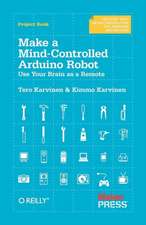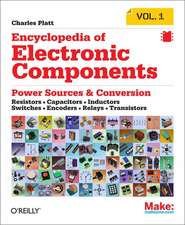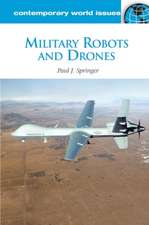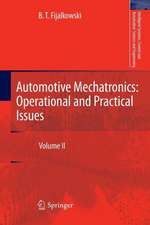Applied Fluorescence in Chemistry, Biology and Medicine
Editat de Wolfgang Rettig, Bernd Strehmel, Sigurd Schrader, Holger Seiferten Limba Engleză Paperback – 15 sep 2011
Preț: 654.62 lei
Preț vechi: 770.14 lei
-15% Nou
Puncte Express: 982
Preț estimativ în valută:
125.28€ • 130.45$ • 105.88£
125.28€ • 130.45$ • 105.88£
Carte tipărită la comandă
Livrare economică 10-24 martie
Preluare comenzi: 021 569.72.76
Specificații
ISBN-13: 9783642641756
ISBN-10: 364264175X
Pagini: 588
Ilustrații: XIX, 562 p.
Dimensiuni: 155 x 235 x 31 mm
Greutate: 0.81 kg
Ediția:Softcover reprint of the original 1st ed. 1999
Editura: Springer Berlin, Heidelberg
Colecția Springer
Locul publicării:Berlin, Heidelberg, Germany
ISBN-10: 364264175X
Pagini: 588
Ilustrații: XIX, 562 p.
Dimensiuni: 155 x 235 x 31 mm
Greutate: 0.81 kg
Ediția:Softcover reprint of the original 1st ed. 1999
Editura: Springer Berlin, Heidelberg
Colecția Springer
Locul publicării:Berlin, Heidelberg, Germany
Public țintă
ResearchCuprins
1 Methods and Trends in Fluorescence Spectroscopy.- 1 Fluorescence Lifetime Imaging and Spectroscopy in Random Media.- 2 Single-Molecule Detection in Biology with Multiplex Dyes and Pulsed Semiconductor Lasers.- 3 Time-Resolved Fluorescence of Conjugated Polymers.- 4 Low-Temperature Photophysics of Permethylated n-Heptasilane: The Borderline Between Excitation Localization and Delocalization in a Conjugated Chain.- 5 Characterization of Membrane Mimetic Systems with Fluorescence Correlation Spectroscopy.- 6 Excited State Probing of Supramolecular Systems on a Submicron Scale.- 7 Three-Photon Excitation of Fluorescence.- 2 Analytical Fluorescence Probes, and Environmental Research.- 8 Fluorescence Properties of Crown-Containing Molecules.- 9 Recent Developments in Luminescent PET (Photoinduced Electron Transfer) Sensors and Switches.- 10 Photostability of Fluorescent Dyes for Single-Molecule Spectroscopy: Mechanisms and Experimental Methods for Estimating Photobleaching in Aqueous Solution.- 11 Analysis of Chemical Dynamics and Technical Combustion by Time-Resolved Laser-Induced Fluorescence.- 12 Fluorescence Techniques for Probing Molecular Interactions in Imprinted Polymers.- 3 Fluorescence Probes in Polymers.- 13 Advanced Light Emitting Dyes: Monomers, Oligomers, and Polymers.- 14 Fluorescence Probes in Polymers and Liquid Crystals: Complex Macromolecular Chain Dynamics (Proposal from the Far East).- 15 Fluorescence Method for Monitoring Gelation and Gel Swelling in Real Time.- 16 Photophysical Studies Provide Thermodynamic Insights into Block-Copolymer Micelle Formation in a Selective Solvent.- 4 Applications of Fluorescence Spectroscopy in Biology.- 17 Fluorescence Microscopy and the Reactions of Single Molecules.- 18 Solvent Relaxation in Biomembranes.- 19 Luminescent Lanthanide Chelates for Improved Resonance Energy Transfer and Application to Biology.- 5 Fluorescence Techniques in Medicine — a Challenge for the Future.- 20 Fluorescent Lifetime Imaging Microscopy.- 21 Injection Based Heterogeneous Fluorescence Immunoassays.- 22 Microfluorometry of Cellular and Subcellular Processing in CNS Cells.- 23 Fluorescence Diagnosis in the Border Zone of Liver Tumors.
Textul de pe ultima copertă
This interdisciplinary book gives a comprehensive survey of the state-of-the-art and on trends in fluorescence techniques in science, medicine and engineering. The main chapters contain extended reviews which are supplemented by more specialized papers describing details and applications. The volume is intended for practitioners applying this technique in their routine work and for researchers in industry and academia, both groups being active in areas such as environmental monitoring, neuro and cell biology, molecular medicine, including gene research, microscopy and immuno-assays, physics, material science or chemsitry. Breathtaking new methods like ultra-fast time-resolved or single molecule spectroscopy and correlation techniques, fluorescence probes, or imaging techniques and their applications in the fields of electroluminescent polymers, visualization of membrane potentials in neurons or fluorescence imaging of the brain are described by internationally renowned authors.
